
Spend time in Eryri or the Lakes and you'll notice that sheep tend to thrive up wet, windy hills. Mountain Equipment have applied that age old lesson to the Andola. This may look like any other midweight insulated jacket, but doing the business here is a wool blend rather than the standard synthetic fill. I think it works really well, and on the strength of this it would be good to see more wool-insulated products in the outdoors.
Why wool?
Millions of years of evolution went into wool - that's some serious product development. It has been a mainstay of clothing for millennia, and while it may have fallen out of fashion in recent decades for serious mountain wear (unless you're talking socks and baselayers), this natural insulation seems to be enjoying a modest comeback. Wool is robust, warm for its weight, breathable, and handles moisture well; it's also more odour-resistant than your typical synthetic fibre. Given all that, perhaps it's surprising we don't use it more.
Instead of being clad in the usual 100% synthetic insulation derived from petrochemicals, there's something satisfying about wearing a jacket in the hills that's been made in part from materials that could have come from that very location.
The HD Active Wool used in the Andola is not actually pure wool, but a blend of 75% UK-sourced wool and 25% biopolymers derived from plants, a combination that helps make the insulation more resilient. It has been produced at a mill in Yorkshire, so the overall sustainability cred is high.
Some folks can happily wear wool next to the skin; I am not one of them, and find woolen baselayers and jumpers unbearably itchy (socks being the exception). In this case the wool is hidden where nobody could have a problem with it. You get 100g/m2 of Active Wool throughout the jacket, which is a good quantity for keeping you reasonably toasty when stationary without boiling when you're on the move. Crucially, it's less clammy than a lot of synthetic alternatives. And unlike down, it doesn't feel delicate - except for the fact that the jacket has to go on a wool cycle for washing.
The soft-touch 20D nylon fabric is good too - pretty wind resistant, slightly stretchy to aid free movement, and with a PFC-free DWR.
In use
The Andola looks and feels like a midweight synthetic-insulated jacket, and that's the sort of role it performs. If you want something that's warm when wet, and that feels resilient, then it's definitely a viable alternative to synthetics.
I've been using it for hillwalking and summit camping from summer into autumn, and because it's pretty snug for its weight I can see it getting plenty of use in winter too. While it doesn't compete in warmth:weight with the best down jackets or top synthetic performers such as the ME Oreus that we reviewed recently, the Andola does feel at least on par with many others in its weight bracket. It's less niche and a lot more affordable than the Oreus, and looks like good value if you just want something warm-ish and robust.
It's designed to serve either as your main layer or as a midlayer, and I find it more breathable than many alternatives. While synthetic insulated jackets can typically get sweaty on the move I've tended to remain comfortable in the Andola. This jacket is great for active use in colder weather, but for the depths of winter it's not going to replace a chunky belay jacket for outright warmth. It also lacks the fit and features that you'd want in a belay jacket, so while the cut feels good for climbing, it's better thought of as an all-rounder than an alpine or winter climbing specialist.
Weight and packability
At 475g size L on my kitchen scales (ME say 470g, size not specified) the Andola sits squarely in midweight territory. In transit it can be squashed, with considerable effort, into one of its own pockets, with hang tabs to clip it to a harness, and makes a bundle about the size of a 1L water bottle. If you're looking for lighter and more packable jackets this warm or warmer, then you might either consider a quality down fill, or push the boat out and invest in an Oreus.
Fit
This jacket comes in both men's and women's sizes. Cut in ME's 'mountain fit', it's fairly close-fitting, layering well over a light fleece top while still sliding neatly under a shell when the weather turns. I'm 183cm and reasonably broad, and on me size L is a great fit. I've often found Mountain Equipment's clothing a little short in the body, but in this case the hem sits nicely below waist level, keeping draughts out of the midriff. Crucially, I experience almost no hem lift with arms raised (for me it's better in this regard than the ostensibly more techy Oreus), and this makes the Andola a viable choice for scrambling and winter mountaineering.
The hood is close-fitting and simple, with no adjustment or stiffened brim - fine when it's calm, but you will need to back it up with your shell in stormy conditions, when the Andola's unstructured hood can flap around. There's no space for a helmet, but you can wear it underneath one. With the hood down the collar comes nice and high to keep your neck warm.
Features
Your two generous-sized zipped external pockets are positioned high enough to be at least partly usable with a harness or rucksack belt, and because there's a double layer of fill at the front of the jacket the pockets are insulated enough to keep your hands warm. You also get one zipped inner chest pocket; since this is where I carry my phone I'd have preferred this to be on the outside too.
The main zip is a robust one, while the fact you only get one zipper reflects the Andola's non-belay-jacket remit. Concealed hem drawcords allow for a closer fit around the waist, while the simple non-adjustable sleeve cuffs may be a fraction tight on me but they will work - with persuasion - on top of bulky gloves.
Ethics and environment
The HD Active Wool used in this jacket looks a much more sustainable product than your average synthetic fill, combining 75% UK-sourced wool with 25% biopolymer sourced from plants, which is industrially compostable at the end of the garment's life. By 2030, the company that supplies Mountain Equipment has committed to source 100% of its wool from farmers certified to the Responsible Wool Standard. Their wool is non-mulesed, and fully traceable back to the farm through their own 'Woolkeepers' standard, which they say ensures decent animal welfare, farmer welfare and land management standards.
In its own right Mountain Equipment is a member of the Fair Wear Foundation, and the Andola is backed by their Product Lifetime Guarantee.






































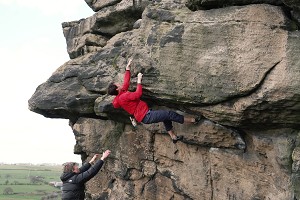
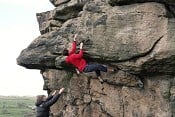
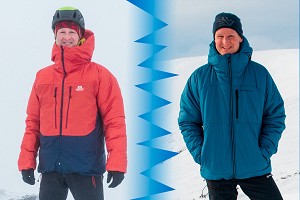



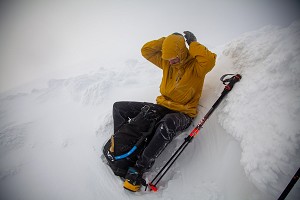

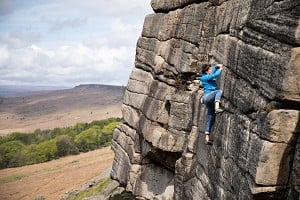



Comments
What sort of warmth level does this offer?
is it possible to compare the warmth it offers with other ME jackets such as as, say, the superflux?
that’s an interesting garment – it reminds me a little of varusteleka’s woolshell jacket: similar ballpark in terms of price, the body of the jacket is a higher weight wool frieze, and instead of a lightweight shell fabric, it has polycotton reinforcements on shoulders and elbows.
as both dan’s review and varusteleka’s ad copy say, it’s not as weight effective as synthetic or down insulation, but the pragmatism of the wool jumper being a very proven bit of kit, so why not make it a little more technical, is hard to argue.
Smartwool made a similar jacket a decade or so ago and I still wear mine. Insulation is Merino Wool. Not sure if they still make 'em
Not sure if I missed it, but what is the construction of the insulation fill? Is it some structured wadding (knitted, batted, woven, etc), or loose fill?
What purpose does the 'biofibre' serve in the insulation? What is its expected lifetime compared with the practically infinite lifetime of wool fibres?
Any thoughts on how this jacket compares to the Salewa one reviewed earlier this year by John McKenna? https://www.ukhillwalking.com/gear/clothing/synthetic_insulation/salewa_ortles_hybrid_tirolwool_responsive_jacket-15656